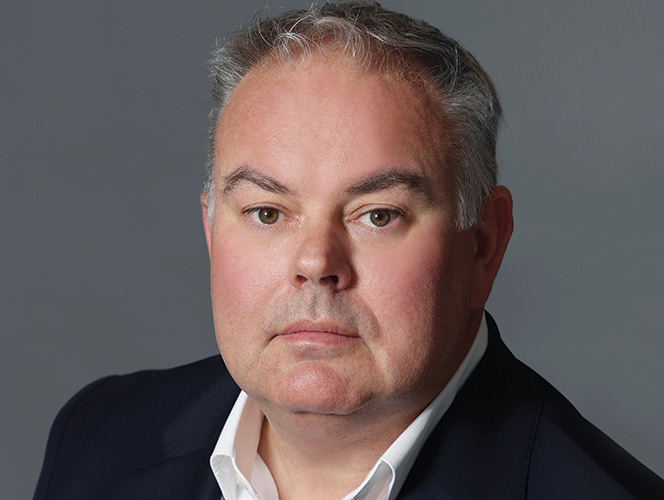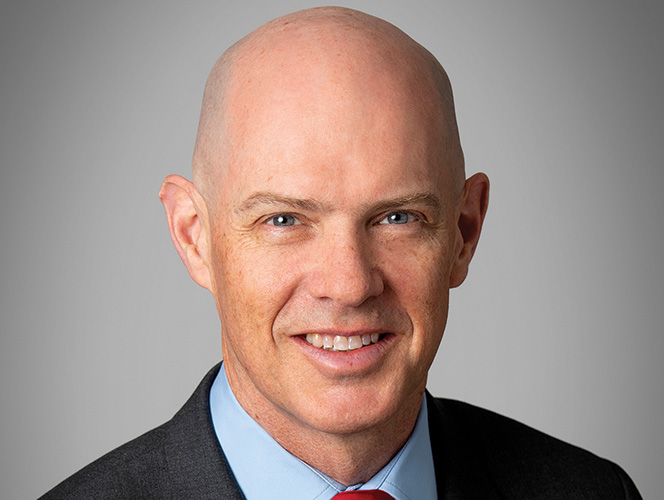Infrastructure has been one of the hottest London lateral markets in recent years, with US firms snapping up a stream of top talent. But what are the factors driving all this activity?
If there was any doubt remaining that infrastructure is a hot asset right now, BlackRock just eradicated it with its market-moving $12.5bn acquisition of Global Infrastructure Partners (GIP). The combined business will have infrastructure assets under management of more than $150bn worldwide, including London’s Gatwick Airport.
The planned transaction is the latest evidence of the sector’s resilience even against the backdrop of high inflation and interest rates and geopolitical uncertainty that have caused M&A and IPO levels generally to falter in recent years.
Indeed, global infrastructure fundraising peaked at $152bn in 2022, according to a report by consultancy Roland Berger – 24% up on 2021. Energy transition, transport decarbonisation and digitisation mean infrastructure investments are a rapidly growing asset class. Against this backdrop, it is unsurprising that law firms have responded in kind, with the lateral market coming alive as firms gear up to position themselves for this work.
James MacArthur, who himself left Weil in March 2023 to join Sidley as head of European energy, transportation and infrastructure, sets out some of the factors driving this activity. ‘Historically, infrastructure investors focused on brownfield developments for assets such as toll roads, super-sewers, train lines and nuclear power stations, as well as long-term investments in highly regulated industries like utilities. These provided low, long-term, inflation-linked returns,’ he explains.
‘However, in recent years, there’s been an emergence of a new class of private equity infrastructure funds focused on investment in core plus assets across energy, digital, transport and social infrastructure.’
The lateral merry-go-round
MacArthur’s move to Sidley after six years at Weil is just one example of the flurry of big-name moves in the infrastructure market in recent months.
Kirkland & Ellis, which is never far away from the action where lateral recruitment is concerned, has significantly built out its European energy and infrastructure capabilities of late, with hires including Sara Pickersgill and Paul Sampson from Allen & Overy (A&O) and Clifford Chance (CC) duo James Boswell and Toby Parkinson.
Elsewhere, both Paul Hastings and MacArthur’s former home Weil have seen a changing of the guard, with the former enlisting Jessamy Gallagher (pictured in main image) and Stuart Rowson from Linklaters, and the latter recruiting infrastructure transactions partner Brendan Moylan from Latham & Watkins.
At Sidley, London managing partner Tom Thesing says the firm’s decision to bolster its infrastructure offering in London by hiring MacArthur, as well as his former Weil colleague Ed Freeman, was driven by the firm’s US clients increasingly looking towards Europe and Asia, while European funds have also become more active in the US.
‘We saw that Sidley had an opportunity to enhance our global offering and wanted sector-focused people in London,’ Thesing reflects. ‘Thankfully James and Ed came over.’
The exits left Weil with big shoes to fill, with the firm adding Moylan within weeks. Moylan’s own departure from CC to Latham in 2018 had represented an early statement of intent by US firms in London in the infrastructure space, and his move to Weil reunited him with former CC colleague Paul Hibbert, an acquisition and leveraged finance specialist.
‘There’s been an emergence of a new class of private equity infrastructure funds focused on investment in core plus assets across energy, digital, transport and social infrastructure.’
James MacArthur, Sidley
The merry-go-round moves at Weil and Sidley came only months after Kirkland made a splash in London with a series of eye-catching hires. Following infra funds specialist Sampson’s move from A&O in November 2022, his former M&A counterpart Pickersgill joined the following January, while fellow finance/corporate duo Boswell and Parkinson arrived together from CC the same month.
Having advised on private equity and infrastructure transactions his whole career – including a stint at OMERS Infrastructure – Parkinson was attracted to the focus of Kirkland’s offering.
‘Kirkland felt fully established in private equity and private equity real estate in Europe, and therefore infrastructure was a natural extension of what it was doing in Europe already,’ he explains. ‘The firm was already advising a large number of real assets clients on the fund formation side. Paul Sampson joined shortly before us to work with [funds partner] Jonathan Tadd, who led efforts with clients like Copenhagen Infrastructure, Slate, EQT and Antin. Infrastructure M&A and finance were therefore other areas where the firm felt it was important to be able to provide a full service to clients in Europe.’
The sponsor focus of Kirkland was also a big draw for Pickersgill. ‘Everything we do here in the London office is geared towards serving sponsors. Added to that, the fact that we have a US practice of 400 lawyers who focus on delivering energy and infrastructure advice to sponsor clients means that we can bring cutting-edge technology on debt structures, capital structures and equity to the European market.’
And in the same month as Pickersgill made her move to Kirkland, fellow US firm Paul Hastings was also joined by high-profile Linklaters duo Gallagher and Rowson.
As with Pickersgill’s move from A&O, it was partly the strength of Paul Hastings’ offering in the US that helped lure the pair over. Referencing the arrival of infrastructure specialists Gregory Tan and Rob Freedman to Paul Hastings’ New York office from Shearman & Sterling last summer, Gallagher says: ‘We wanted to join a diverse firm with a strong US platform, and the opportunity to work closely with Rob and Greg and replicate in the UK and Europe what they were doing in the US was too exciting to turn down.’
Laying the foundations
While all of these hires have unsurprisingly attracted much press attention, their recent timing means firms are still very much in build mode with UK clients.
But the resilience of the infrastructure market against a backdrop in which mainstream PE has been quieter means partners are confident about future growth.
As Gallagher comments: ‘The buyout market has been quiet for most of last year, but the infrastructure market has remained active in comparison. With the resilience of the asset class, and the dry powder of private capital even in tough fundraising conditions, we’ve seen a continued convergence between private equity and infrastructure. The large asset managers are very interested in infrastructure for the relatively stable return opportunities the asset class provides their investors.’
Rowson adds: ‘Even with headwinds including high inflation and rising interest rates, we expect energy and infrastructure assets to remain attractive to investors, with a particular focus on the energy transition and digital sectors, value add businesses and increasing deployment of private credit.’
Over at Weil, Hibbert is seeing the same trend towards energy transition investments, as well as impact investments that harness new technologies and are carbon neutral. ‘Over the past few years we have seen sponsors looking to raise funds dedicated to sustainable investing, energy transition or impact investing. These funds then deploy capital to invest in assets that demonstrably meet ESG goals, for example by harnessing new technologies to reduce emissions such as green steel. Although there are political headwinds, we expect this trend to continue.’
According to Moylan, this shift in investment priorities is also being driven by limited partners (LPs). He argues that LPs in private equity funds want greater exposure to infrastructure assets and will therefore deploy their capital to whoever can provide the best route. While general partners such as EQT, KKR and Blackstone have been active in infrastructure for many years, others are only now reacting.
‘Our clients have recognised that their investors are keen to deploy capital in the infrastructure sector; in the same way that our clients are responding to the needs of their investors, we’re following our clients into this space,’ says Moylan. ‘By “we,” I mean Weil, but also our peers in the market – if they do not have infrastructure capabilities already, they are looking to build or acquire them.’
The BlackRock/GIP mega deal is one example of the trend for consolidation and investment in the market. The deal has generated roles for a host of firms in the US including Skadden and Fried Frank for BlackRock and Kirkland and Debevoise for GIP but the business’s future investments will no doubt benefit firms worldwide.
Meanwhile CVC’s €1bn acquisition of DIF Capital Partners in 2022 was another significant transaction that highlighted the willingness of private equity and general advisory firms to bolster their infrastructure capabilities through the buyout of sector-focused fund managers.
Pickersgill explains that this deal is part of a notable trend: ‘What’s interesting is what’s happening in the sponsor space, where we’ve seen a few examples of big sponsors launching their infrastructure strategies by effectively buying another fund manager. I think there will be more of the asset manager movement to come, because that’s a great way to launch your strategy, rather than trying to grow it from the ground up.’
According to MacArthur, consolidation in the market is to be expected in the wake of increased client activity and focus: ‘We are starting to see an uptick [of infrastructure activity], with an emphasis in the digital infrastructure and energy transition sectors. I’m sure we’ll see consolidation in fibre, where the bigger players will dominate.’
‘Our clients have recognised that their investors are keen to deploy capital in the infrastructure sector; in the same way that our clients are responding to the needs of their investors, we’re following our clients into this space.’
Brendan Moylan, Weil
Digital infrastructure work has also been a significant part of Paul Hastings’ book of business to date. In addition to Gallagher and Rowson’s arrivals, the firm has also hired several other lawyers as partners, including former Weil associate Candice Lambeth and ex-Latham associate Ally McKechnie, and Lambeth explains that such assets present new challenges to clients: ‘Digital has certainly become a key thematic in infrastructure investing. The rapid pace of technological advancement also brings new risks, challenges and uncertainties not traditionally associated with the infrastructure asset class. A core focus of clients’ investment process is balancing first-mover advantage with the ability to mitigate against risks of a technology becoming obsolete or less relevant in the future.’
The rapid pace of technological advancement is also shaping the way clients engage with conventional infrastructure assets. ‘There is momentum in the digitisation of traditional, “non-digital” infrastructure, whether through the introduction of robotics and automation, smart meter monitoring systems, and use of AI to bring enhanced efficiency to existing systems and operations,’ says McKechnie. ‘We are seeing portfolio companies partner with technology specialists – often in the form of start-ups or growth businesses – to leverage synergies in the broader digital landscape. This creates transformative opportunities within existing infrastructure portfolios.’
What next?
At Kirkland, Pickersgill is unsurprisingly bullish about the team’s prospects for the future: ‘We’re fully up and running and doing deals across all the different energy and infrastructure verticals. We’re always on the lookout for top talent – Sinead O’Shea has also joined us from Simpson Thacher which we’re very excited about, as she has fantastic experience on the infrastructure debt side.’
At Weil, Hibbert points to the groundwork already done to build up the firm’s practice. ‘Six years ago, Weil was one of the first movers in terms of investing in a dedicated infrastructure and energy practice. UK firms had done this for a long time, and US firms were starting to wake up to the idea that this practice is a natural evolution of a business in London that already has excellent private equity, restructuring and financing expertise.’
With this concerted and continuing push by US firms, the focus will now inevitably turn to how UK headquartered firms will react. The London infrastructure market boasts a multitude of top outfits well-positioned to guide clients across an asset’s entire lifespan, but as recent evidence demonstrates, the lure of US firms is often just too great to resist.
Less than five years ago, every single partner in the Legal 500’s Hall of Fame for infrastructure M&A and acquisition financing was at UK firms; while now, five of eight are at US firms. The inevitable question is – who will be next? LB
This article first appeared on Legal Business.



